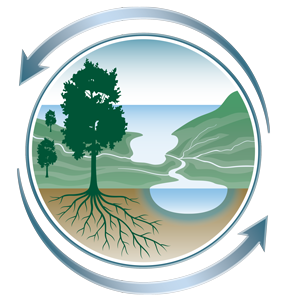May 13, 2020
Building Confidence in Advanced Permafrost Models
Using field observations to improve thermal hydrologic processes in permafrost models.
General trends in the observed (red) and simulated (black) thermal hydrologic data are well captured in the simulations.
[Reprinted under a CC BY 4.0 License from Jan, A., E. T. Coon, and S. L. Painter. "Evaluating integrated surface/subsurface permafrost thermal hydrology models in ATS (v0.88) against observations from a polygonal tundra site." Geoscientific Model Development 13 2259–2276 (2020). https://doi.org/10.5194/gmd-13-2259-2020.]
The Science
Models are essential tools to study the complex permafrost environment. The research team have used multiple field observations in multiyear fine-scale simulations to evaluate and build confidence in emerging permafrost models that couple processes across the surface and shallow subsurface.
The Impact
Given the multiphysics nature of permafrost simulations, multiple types of field observations across multiple years are needed to refine and thoroughly evaluate emerging permafrost models. This comparison against multiple types of data collected by the Next-Generation Ecosystem Experiments (NGEE) –Arctic team provides new confidence in their representations of permafrost physical processes and projections of permafrost thermal hydrology and the fate of stored organic carbon.
Summary
Highly resolved three-dimensional (3D) simulations of integrated surface/subsurface permafrost thermal hydrology were compared, for the first time, to multiple types of observations. The simulations using the Advanced Terrestrial Simulator (ATS) successfully reproduced multiple types of observations collected by the NGEE-Arctic team over multiple years, including winter snow depth; summer water table; and soil temperature at several depths in the trough, center, and rim of an ice-wedge polygon. After applying a simple upscaling procedure, evaporative fluxes were in reasonable agreement with evapotranspiration fluxes from a nearby eddy-covariance flux tower. Simulations showed sensitivity to parameters in the bare soil evaporation model, snow model, and the lateral hydraulic conductivity. This study provides new confidence in our models for the responses of Arctic polygonal tundra to a warming climate at fine and intermediate scales, which provides, in turn, the basis for parameterizing processes in the Earth System Model (ESM) to reduce uncertainty in ESM projections of permafrost landscapes.
Principal Investigator
Ahmad Jan
Oak Ridge National Laboratory
jana@ornl.gov
Program Manager
Daniel Stover
U.S. Department of Energy, Biological and Environmental Research (SC-33)
Environmental System Science
daniel.stover@science.doe.gov
Funding
This work was supported by the Next-Generation Ecosystem Experiments (NGEE) –Arctic project.
References
Jan, A., E. T. Coon, and S. L. Painter. "Evaluating integrated surface/subsurface permafrost thermal hydrology models in ATS (v0.88) against observations from a polygonal tundra site." Geoscientific Model Development 13 2259–2276 (2020). https://doi.org/10.5194/gmd-13-2259-2020.

